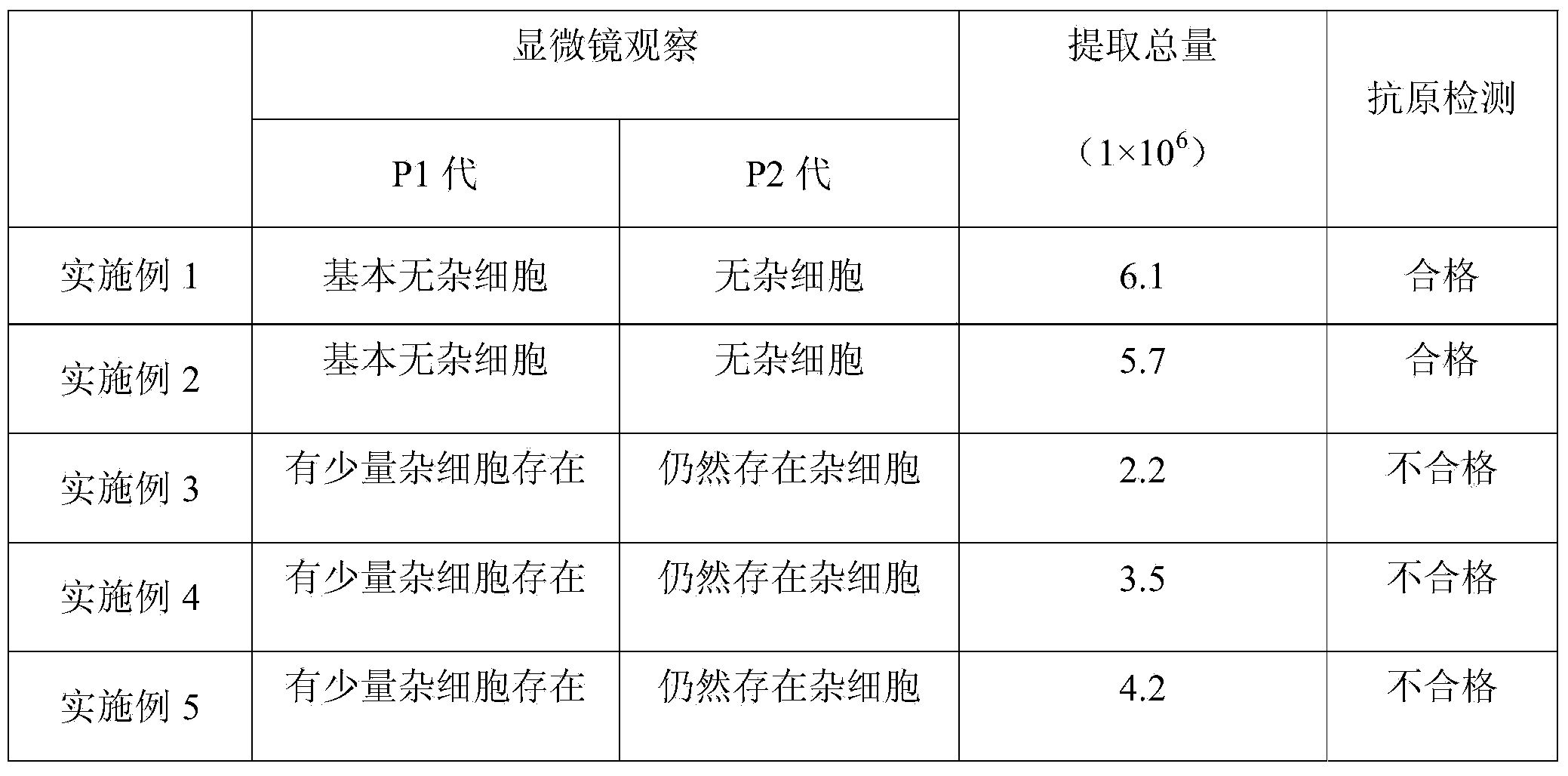Method for extracting and culturing adipose-derived stem cells
An adipose stem cell and culture method technology, applied in the field of extracting and culturing adipose stem cells, can solve the problems of aging limitation of adipose stem cells, and achieve the effects of strong multi-directional differentiation ability, good activity and simple preparation of cells
- Summary
- Abstract
- Description
- Claims
- Application Information
AI Technical Summary
Problems solved by technology
Method used
Image
Examples
Embodiment 1
[0036] (1) Take 50ml of human adipose tissue, wash it repeatedly with D-Hank's balanced salt solution with a pH value of 7.2-7.4, and remove excess aqueous solution and blood by centrifugation;
[0037] (2) Mince the adipose tissue into 1-2mm 3 Small pieces were digested by adding the same volume of digestive fluid as the adipose tissue taken, and placed in a shaker at 37°C, 190rpm for 30 minutes; adding 100ml of BME medium containing 15% FBS to stop digestion; the digestive fluid was 0.1% pancreatic Enzymes - EDTA, 0.1% Collagenase Type I and 0.2% Collagenase Type IV in D-Hank's Balanced Salt Solution.
[0038] (3) Static and stratified, the bottom cells were blown repeatedly with D-Hank's balanced salt solution with a pH value of 7.2-7.4, and cleaned; the cleaned liquid was filtered through a 100-mesh sieve to remove undigested tissue, and the adipose stem cells The suspension and erythrocyte lysate were mixed at a ratio of 1:1 and incubated for 2 minutes, centrifuged at 4°...
Embodiment 2-5
[0040] Example 2-5 Effect of Digestive Liquid Formula on Adipose Stem Cells
[0041] According to the extraction and culture method in Example 1, the digestive juice was adjusted, and the condition of the finally obtained adipose stem cells was observed.
[0042] group
Trypsin-EDTA(%)
Type I Collagenase (%)
Type IV Collagenase (%)
Example 2
0.15
0.15
0.3
Example 3
-
0.7
0.3
Example 4
2.5
0.75
-
Example 5
0.05
0.05
0.5
[0043] When the cells are passed to the P2 generation, the cultured cells are collected, and CD31, CD34, CD45, CD29, CD73, CD90, CD105 and CD49d are measured by flow cytometry, and the adipose stem cells are negative for CD31, CD34 and CD45, less than 1%, and CD29, CD73, CD90, CD105 and CD49d were positive, and more than 95% were regarded as qualified cells. During the passaging process, the status of miscellaneous cells was observed through a microscope, and...
Embodiment 6-10
[0045] The influence of the formula of embodiment 6-10 culture solution on adipose stem cells
[0046] According to the extraction and culture method in Example 1, the composition of the culture medium was adjusted, and the conditions of the finally obtained adipose stem cells were observed.
[0047]
[0048] When the coverage rate of the primary cultured cells reaches 80%-90%, the cells in each culture flask are counted by using the automatic cell counter Countess of Invitrogen Company. The specific results are as follows:
[0049]
[0050] Through flow cytometric testing, the stem cells cultured in Examples 6-10 met the qualified cell standards described in Examples 2-5, and the control medium was BME medium with 15% FBS.
PUM
 Login to View More
Login to View More Abstract
Description
Claims
Application Information
 Login to View More
Login to View More - R&D
- Intellectual Property
- Life Sciences
- Materials
- Tech Scout
- Unparalleled Data Quality
- Higher Quality Content
- 60% Fewer Hallucinations
Browse by: Latest US Patents, China's latest patents, Technical Efficacy Thesaurus, Application Domain, Technology Topic, Popular Technical Reports.
© 2025 PatSnap. All rights reserved.Legal|Privacy policy|Modern Slavery Act Transparency Statement|Sitemap|About US| Contact US: help@patsnap.com

